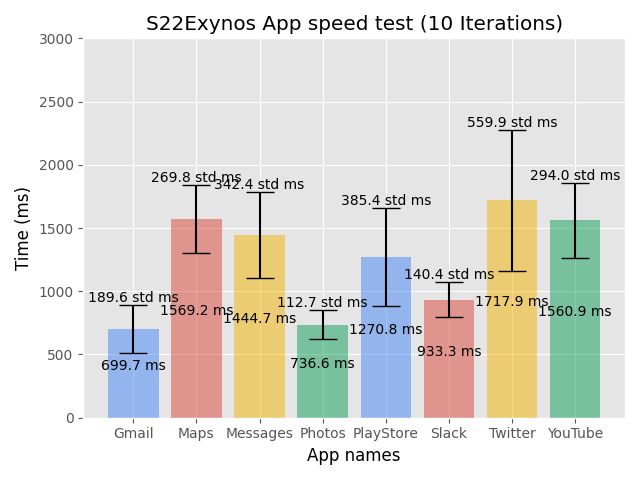 MWC 2022 is officially underway in Barcelona, and instead of smartphones, HUAWEI is taking the stage to announce new Windows devices at the show. The lineup of devices coming in 2022 includes a new HUAWEI MateBook X Pro, the MateBook E 2-in-1 tablet, the MateStation X all-in-one (AiO), and the MatePad Paper e-reader. All of these devices are underpinned by HUAWEI’s Super Device connectivity, enabling cross-device collaboration in HUAWEI’s ecosystem, including HarmonyOS/Android smartphones and tablets.
MWC 2022 is officially underway in Barcelona, and instead of smartphones, HUAWEI is taking the stage to announce new Windows devices at the show. The lineup of devices coming in 2022 includes a new HUAWEI MateBook X Pro, the MateBook E 2-in-1 tablet, the MateStation X all-in-one (AiO), and the MatePad Paper e-reader. All of these devices are underpinned by HUAWEI’s Super Device connectivity, enabling cross-device collaboration in HUAWEI’s ecosystem, including HarmonyOS/Android smartphones and tablets.
HUAWEI MateBook X Pro

The first device coming out of MWC 2022 is the new HUAWEI MateBook X Pro laptop, which has been completely redesigned for this year. This new model is as thin as 15.5mm at its thickest point and weighs just 1.38kg. It has a 14.2-inch display in a sharp 3120 x 2080 resolution and a 3:2 aspect ratio, plus it has a 90Hz refresh rate and can reach up to 500 nits of brightness. It’s color-accurate, too, covering 100% of DCI-P3 and touting a Delta E < 1 rating for color accuracy. Above the display, there’s a 720p webcam for video calls.
HUAWEI says the new design of the MateBook X Pro (2022) allowed it to redesign the cooling system as well, promising 60% more airflow and 100% more heat dissipation compared to previous models. This allows the CPU to run at a higher wattage, though HUAWEI is still using Intel U-series processors. These are 11th-generation processors, though, so it’s not the newest hardware.
The new MateBook X Pro also comes with an improved touchpad that makes use of smart gestures. For example, swiping up or down on the left edge will adjust the display brightness, while swiping the same way on the right edge can change the volume. You can also swipe left or right on the top edge to rewind or fast-forward a video or movie. Finally, you can knock twice on the touchpad to take a screenshot.
The audio system is promising as well. There’s a six-speaker setup with what HUAWEI calls “sound field reconstruction” technology to deliver high-quality, powerful sound.
Finally, you get four USB Type-C ports, all of which support charging – but none of them supports Thunderbolt 4. Two have USB 3.2 Gen 2 speeds, while the other two have USB 3.2 Gen 1 speeds. The included GaN charger can deliver up to 90W of power to the MateBook X Pro, but you can also use on your HUAWEI phone, with support for 50W SuperCharge.
HUAWEI MateBook E

Next up from MWC 2022 is the HUAWEI MateBook E, a detachable 2-in-1 Windows PC, meant to compete with the likes of the Surface Pro. It does have some advantages, being just 7.9mm thin (compared to 9.3mm on the Surface Pro 8), and weight 709 grams, which is also less than the 891 grams of Microsoft’s premium tablet. The tablet has a magnesium middle frame and a carbon fiber back panel.
A big benefit of the HUAWEI MateBook E is the OLED display, which is something that’s still not too common in laptops. It’s a 12.6-inch panel with a resolution of 2560 x 1600, and it reaches a maximum brightness of 600 nits, making it pretty good for outdoor use. It also covers 100% of DCI-P3 and has a Delta E < 1, so color reproduction should also be great here. And of course, because it’s OLED, you get a 1,000,000:1 contrast ratio, so colors should really pop, especially on dark backgrounds.
The HUAWEI MateBook E is powered by Intel’s 11th-generation processors, specifically the 9W models, and it uses a 3D cooling system to keep things running smoothly. For connectivity, you get a single USB Type-C port, which is also used for charging, but it does support Thunderbolt 4 if you want to use a docking station. There are also pogo pins used to connect the detachable keyboard.
On that note, the HUAWEI MateBook E supports the HUAWEI Smart Magnetic Keyboard, which also serves as a case and kickstand, since the tablet doesn’t have one built-in. The case wraps around both sides, and the keyboard features full-size keys with 1.3mm of travel, which isn’t bad for something this thin. There’s also a Glide keyboard sold separately, which is backlit and includes a passthrough USB-C port with 65W charging.
The HUAWEI MateBook E also comes with support for the M-Pencil (2nd generation), and it can actually attach magnetically to the side of the tablet and charge wirelessly. The M-Pencil supports 4,096 levels of pressure and has just 2ms of latency on Windows, so it should be a pretty good inking experience overall.
HUAWEI MateStation X

Moving on from the MateBook series to the desktop side of things, HUAWEI is also introducing the MateStation X at MWC 2022, an all-in-one PC. It’s powered by AMD Ryzen 5000 H-series processors, which are designed for laptops and no longer the newest hardware in town. You also don’t get discrete graphics of any kind, but you do get 16GB of RAM and a 1TB PCIe Gen 3 SSD.
The highlight of the MateStation X is the display, which is a 28.2-inch panel in the 3:2 aspect ratio, similar to the MateView monitor the company launched last year. it can reach up to 500 nits, it covers 98% of DCI-P3, and it has a Delta E <= 1, so color accuracy is also great, and to round things out, it’s a touchscreen with 10-point multitouch. HUAWEI describes it as a floating screen due to the minimal bezels and the 86.3% screen-to-body ratio. You can tilt the screen easily with one finger, too.
Sound should also be quite good, seeing as the MateStation X has three speakers built-in. There are two 5W full-range speakers and a 10W woofer, all using Devialet technology. The PC also has four mics for calls.
HUAWEI MatePad Paper

Finally, HUAWEI introdiced MatePad Paper at MWC 2022 – an e-reader running HarmonyOS. It has a 10.3-inch display and it seems impressive on a few levels. For starters, it has a “smart refresh” mode, which makes it more feasible to watch videos in a pinch, while still working great for text. This is also helped by a 256-level grayscale, which allows both text and images to display more naturally. It’s also readable at night thanks to backlight with 32 levels of intensity.
In addition to all that, the MAtePad Paper also supports the M-Pencil with its full 4,096 levels of pressure. In fact, the e-reader has a PPMA textured surface to simulate the feel of paper more closely while writing on the screen. The device also has some cool features for taking notes. For example, you can take notes while recording a voice clip, and the notes you take are linked to time stamps on your voice recording, so you can always get the full context of the notes you took. There’s also handwriting conversion to text, if you want notes to be a bit easier to read.
As for the internal specs, the HUAWEI MatePad Paper comes with 4GB of RAM, 64GB of storage, and the battery promises to last over four weeks in standby. There’s also a fingerprint reader built into the power button.
Since it runs HarmonyOS, the HUAWEI MatePad Paper supports the Super Device integration, too. You can easily share files from your Huawei phone to the tablet. You can even use it as a second screen for your PC, something that you can already do with HUAWEI tablets as well.
HUAWEI also announced the standard MatePad tablet, with a 10.4-inch FullView display and running HarmonyOS 2.
HUAWEI ecosystem
Connecting all of these devices is HUAWEI’s ecosystem integration, which it calls Super Device. You can easily connect these devices to each other to do all sorts of things, such as mirroring your phone’s screen on your PC, using a tablet as a second screen for your Windows PC, and easily moving files between devices. You can also easily connect peripherals like earbuds to your HUAWEI ecosystem using a simple drag-and-drop gesture.
Super Device as a brand is now coming to PCs for the first time, and that means you’ll see a new HUAWEI control panel on your taskbar. If you click it, you get a handful of quick actions, but you’ll also see the Super Device panel, which lets you easily connect wirelessly other devices with the drag-and-drop gesture mentioned above. Those devices also include the new PixLab X1 laser printer and the HUAWEI Sound Joy soundbar that were also announced today.
One of the big things coming to HUAWEI devices, specifically laptops, is the new Mobile App Engine for PC. This is essentially Android app emulation, similar to what’s built into Windows 11 now, but there’s a key difference: This works on Windows 10. This has been available in China for a while, and HUAWEI says thousands of apps are already compatible. For users in other markets, a beta version is rolling out today for various HUAWEI PCs as part of an update to HUAWEI PC Manager.
The post HUAWEI announces new MateBook PCs and more at MWC 2022 appeared first on xda-developers.
from xda-developers https://ift.tt/8WFoMrT
via IFTTT







































